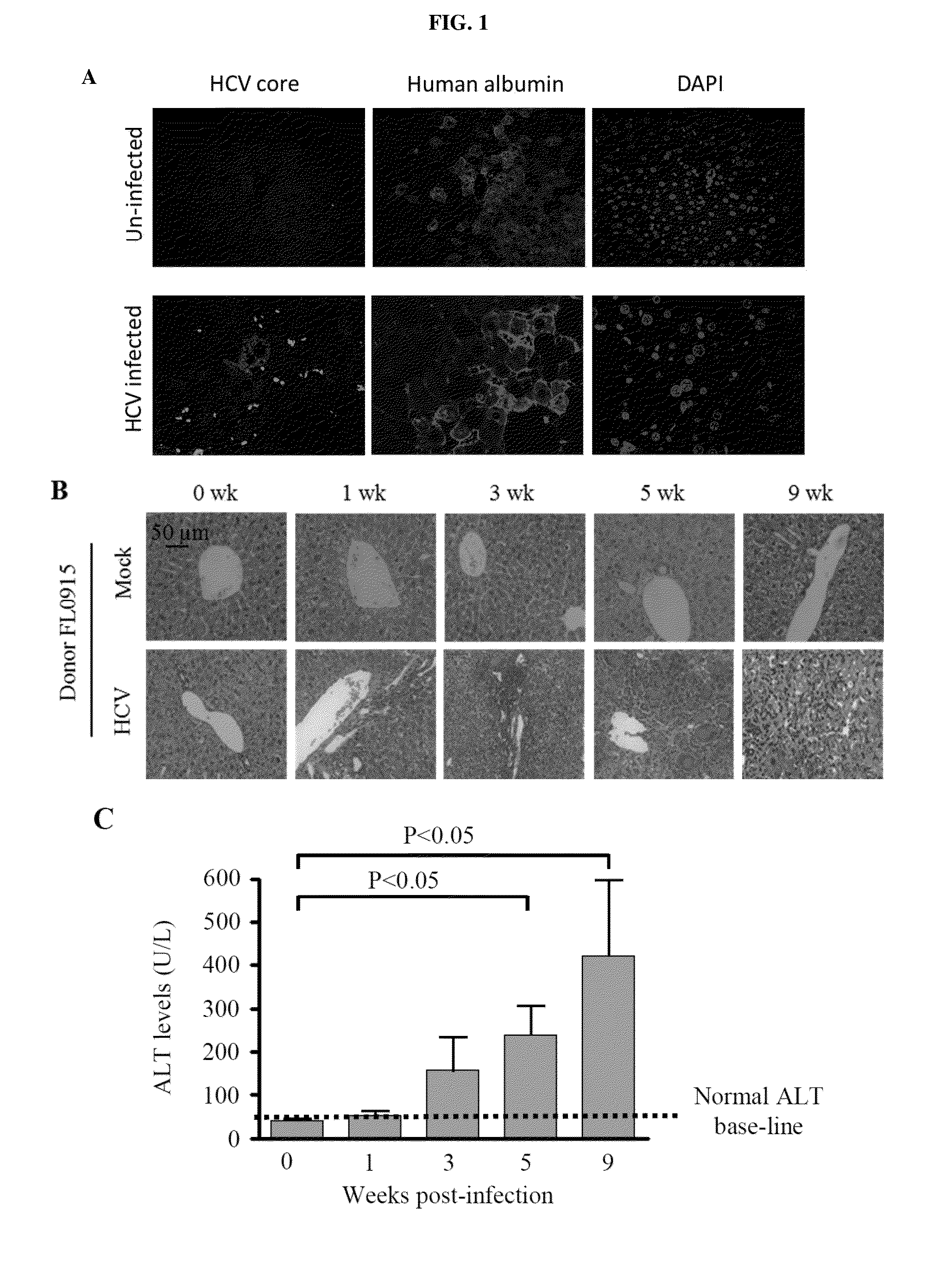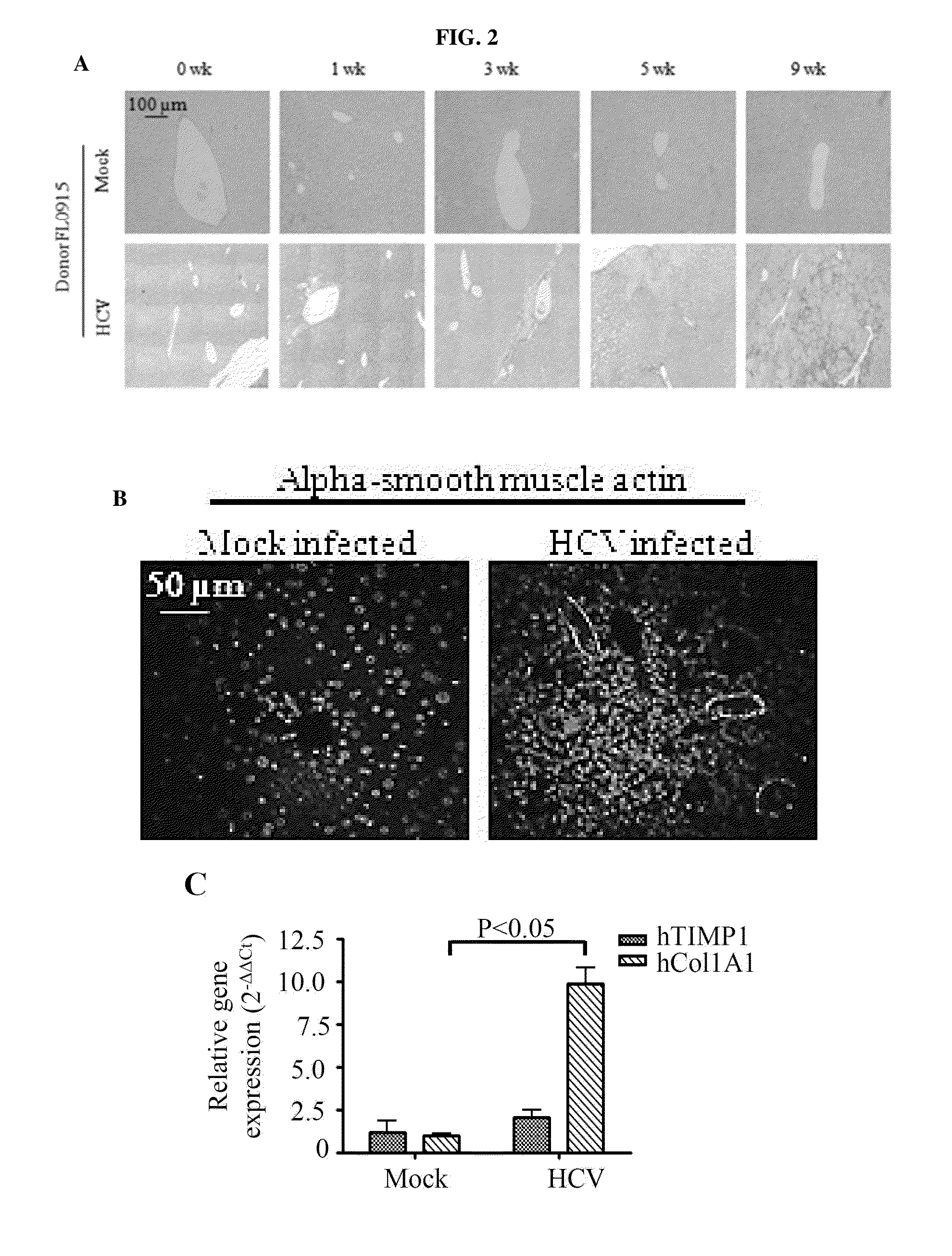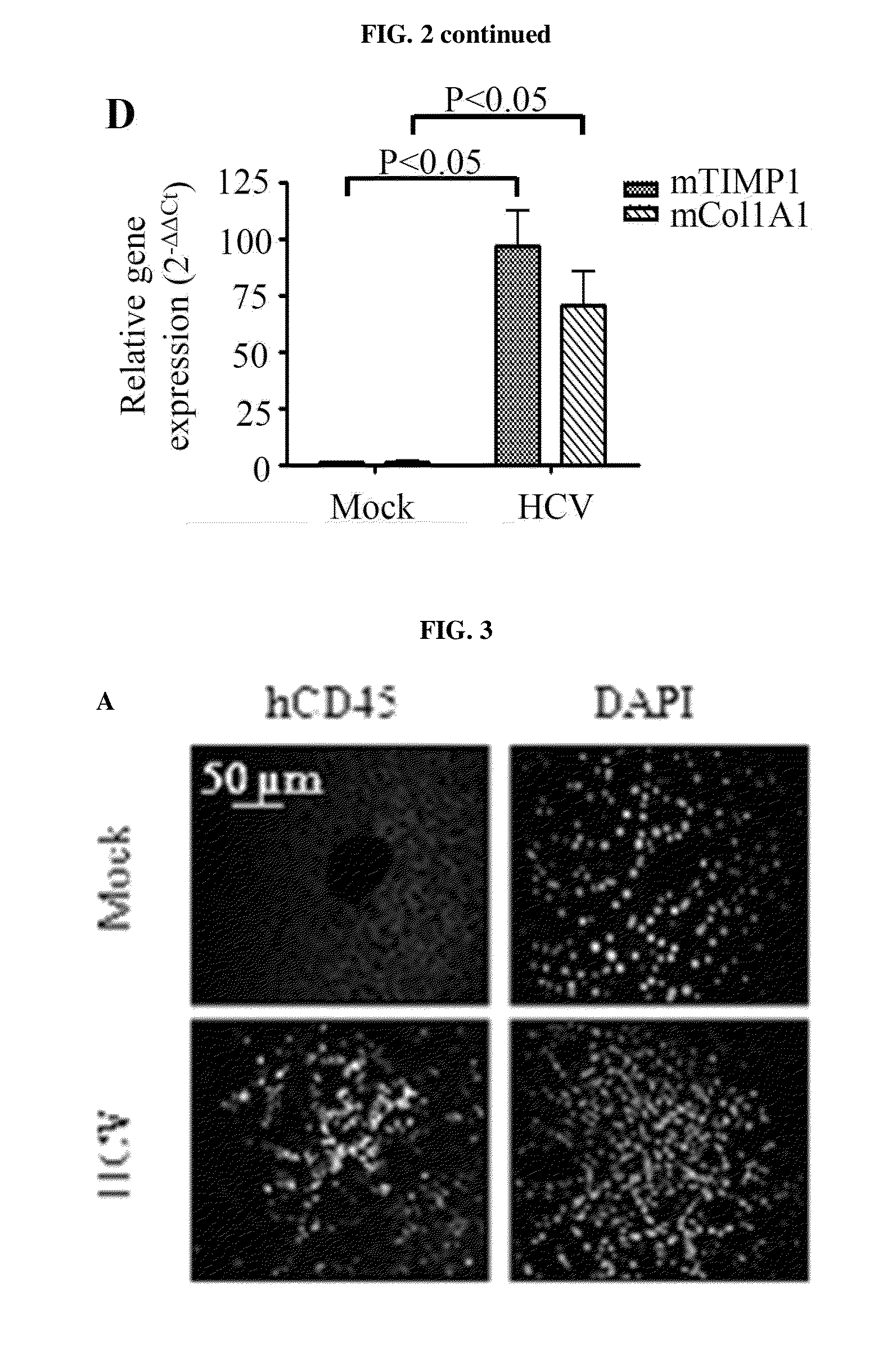Humanized mouse model for study of bona fide hepatitis virus infection and use thereof
a humanized mouse and hepatitis virus technology, applied in the field of biotechnology, can solve the problems of limited human inability to develop effective vaccines or antiviral treatments, and inability to effectively treat hbv and hcv tropism,
- Summary
- Abstract
- Description
- Claims
- Application Information
AI Technical Summary
Benefits of technology
Problems solved by technology
Method used
Image
Examples
Embodiment Construction
[0031]Hepatitis viruses, particularly hepatitis C virus (HCV) represents a major health concern worldwide, with more than 175 million people infected. Many of these patients with the infection often progress to develop hepatitis, liver fibrosis, cirrhosis and hepatocellular adenoma or carcinoma. Currently, there is no vaccine known to be effective and limited options are available for antiviral treatments, making HCV an economic and public health threat to the world. A major obstacle in the development of vaccine and antiviral therapy arises from the fact that HCV tropism is restricted to humans, thus resulting in little to no infectivity of the virus in other hosts. Chimpanzees are currently the most complete model able to support the complete HCV life cycle and recapitulate the host response observed in human patients, but limitations such as low chronic infection rate, poor demonstration of liver fibrosis, high cost and ethical concerns have limited their usage for HCV research.
[...
PUM
| Property | Measurement | Unit |
|---|---|---|
| time | aaaaa | aaaaa |
| SEM | aaaaa | aaaaa |
| fluorescent micrographs | aaaaa | aaaaa |
Abstract
Description
Claims
Application Information
 Login to View More
Login to View More - R&D
- Intellectual Property
- Life Sciences
- Materials
- Tech Scout
- Unparalleled Data Quality
- Higher Quality Content
- 60% Fewer Hallucinations
Browse by: Latest US Patents, China's latest patents, Technical Efficacy Thesaurus, Application Domain, Technology Topic, Popular Technical Reports.
© 2025 PatSnap. All rights reserved.Legal|Privacy policy|Modern Slavery Act Transparency Statement|Sitemap|About US| Contact US: help@patsnap.com



